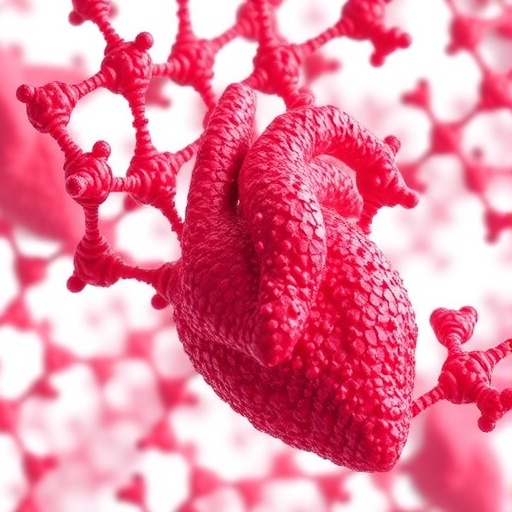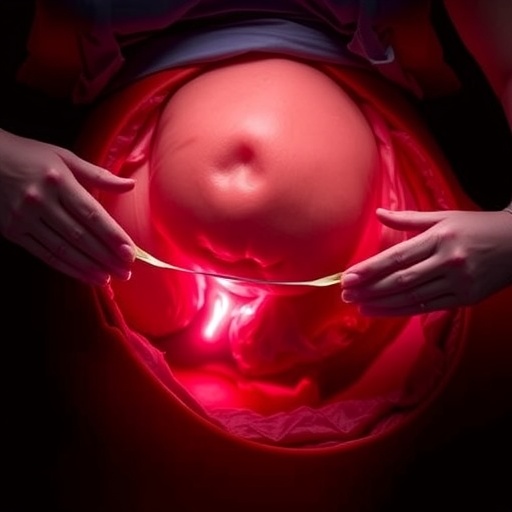In a groundbreaking advance that could revolutionize our understanding and diagnosis of cardiac amyloidosis, researchers have unveiled the structural intricacies of apolipoprotein A-IV (ApoA-IV) fibrils, shedding light on a previously enigmatic contributor to mixed cardiac amyloid deposits. This discovery marks a significant leap toward more precise structural diagnoses of cardiac amyloidosis, a complex and often fatal condition characterized by the deposition of insoluble protein fibrils within heart tissue, leading to progressive cardiac dysfunction.
Cardiac amyloidosis arises when abnormal protein aggregates accumulate in the extracellular spaces of the heart muscle, disrupting its normal architecture and function. Until now, the primary culprits identified were transthyretin and immunoglobulin light chains. However, the presence of mixed amyloid deposits containing multiple proteins has complicated diagnostic efforts, obscuring the molecular underpinnings of disease pathogenesis and impeding the development of targeted therapies. The elucidation of ApoA-IV fibrils provides a missing piece to this puzzle, offering an unprecedented window into the molecular structure of amyloid deposits beyond the traditional protein actors.
Utilizing state-of-the-art cryo-electron microscopy, the interdisciplinary team harnessed cutting-edge imaging techniques to visualize the fibrillar architecture of ApoA-IV at near-atomic resolution. This approach enabled the meticulous mapping of the three-dimensional assembly, revealing a protofilament organization with distinctive polymorphic conformations. These structural polymorphs suggest a molecular versatility in fibril formation, which may underlie the diverse clinical manifestations and variable pathological burdens observed in patients with mixed-type cardiac amyloidosis.
The study’s detailed structural characterization also illuminated the specific regions within the ApoA-IV polypeptide that drive fibril formation. Hydrophobic core domains and charged residues were identified as critical contributors to the stabilization of the amyloid backbone, orchestrating the self-assembly process. This insight opens avenues for the design of small molecules or peptides capable of disrupting these intermolecular interactions, laying the groundwork for innovative therapeutic interventions aimed at halting or reversing fibrillogenesis.
One of the most compelling aspects of this research is the revelation of how ApoA-IV fibrils coexist and potentially synergize with other amyloidogenic proteins within cardiac tissue. Unlike monotypic amyloid disease manifestations, mixed amyloidosis involves complex interplays among disparate fibril species, a factor that has confounded conventional diagnostic and treatment paradigms. The team’s findings indicate that ApoA-IV may act not merely as a bystander but as an active participant influencing the formation, stability, and pathological impact of amyloid deposits in the myocardium.
This structural diagnosis has profound implications for clinical practice. Current diagnostic modalities, including tissue biopsies and proteomic assays, often struggle to differentiate and quantify the contributions of multiple amyloid species in patients exhibiting mixed cardiac amyloidosis. The ability to identify ApoA-IV fibrils with high specificity and structural fidelity could enhance the accuracy of diagnoses, enabling clinicians to tailor treatment regimens more effectively and monitor disease progression with greater precision.
Moreover, the insights gleaned from these structural analyses carry the potential to redefine the taxonomy of cardiac amyloidosis. By incorporating ApoA-IV as a distinct amyloidogenic entity with characteristic fibrillar morphologies, researchers and clinicians alike can refine disease classification systems, which in turn facilitates improved patient stratification in clinical trials and observational studies.
The implications extend beyond diagnosis and classification. Understanding the molecular architecture of ApoA-IV fibrils informs us about the biophysical principles governing amyloid assembly. The study highlights how alterations in protein folding pathways and environmental factors within the cardiac extracellular matrix can promote the nucleation and elongation of fibrils. These findings may stimulate efforts to explore strategies that modulate these microenvironmental conditions as a means to curtail amyloidogenesis.
Importantly, the research underscores the significance of ApoA-IV not only as a fibril constituent but also in the broader pathophysiological context of lipid metabolism and cardiovascular health. Given ApoA-IV’s recognized roles in lipid transport and anti-inflammatory processes, its aberrant aggregation into fibrils invites inquiries into the bidirectional relationship between metabolic dysfunction and amyloid pathology in the heart.
The comprehensive structural elucidation achieved by this study is the culmination of collaborative efforts bridging molecular biology, biophysics, and clinical cardiology. The high-resolution models generated serve as critical templates for computational simulations aimed at predicting fibril dynamics and interactions with candidate drugs. Such interdisciplinary synergy paves the way for accelerated drug discovery pipelines tailored to combat multifaceted amyloid diseases.
Furthermore, recognizing ApoA-IV fibrils in mixed cardiac amyloidosis enriches the landscape of biomarker discovery. Circulating fragments or conformational epitopes unique to ApoA-IV aggregates may serve as novel diagnostic indicators, potentially detectable through minimally invasive approaches. This prospect aligns with the growing emphasis on personalized medicine and the quest for biomarkers that reflect disease heterogeneity and therapeutic response.
Looking ahead, the researchers advocate for expanded investigations into the prevalence and clinical significance of ApoA-IV amyloid deposits across diverse patient populations. Longitudinal studies incorporating advanced imaging and proteomic techniques will be essential to unravel the temporal dynamics of fibril formation, deposition, and clearance, thereby informing optimal intervention windows.
In addition to its clinical ramifications, this study contributes to the fundamental understanding of amyloidogenesis. The polymorphic nature of ApoA-IV fibrils exemplifies the structural adaptability of amyloid proteins, which may extend to other amyloidopathies beyond the heart. Such knowledge fosters a comprehensive framework for interpreting amyloid diversity and its relationship to tissue specificity and disease severity.
The revelation of ApoA-IV’s role in mixed cardiac amyloidosis exemplifies how technological innovations, notably cryo-EM, empower biomedical research to dissect complex molecular assemblies in situ. These advances herald a new era in amyloidosis research, where precision structural diagnosis can directly inform patient care, therapeutic development, and prognostic assessments.
As amyloidosis continues to pose therapeutic challenges due to its multifactorial nature and proteomic complexity, studies such as this illuminate the path forward. By decoding the structural language of ApoA-IV fibrils, scientists and clinicians are better equipped to face the intricate reality of mixed cardiac amyloidosis and to develop strategies that transcend conventional therapeutic boundaries.
Ultimately, this pioneering work not only deepens our comprehension of cardiac amyloid pathology but also exemplifies how integrative structural biology can unlock doors to transformative medical breakthroughs. It stands as a testament to the power of detailed molecular diagnosis in unraveling disease mechanisms and crafting the future of targeted, effective cardiac care.
Subject of Research: Apolipoprotein A-IV fibrils and their role in mixed cardiac amyloidosis
Article Title: Apolipoprotein A-IV fibrils: structural diagnosis of mixed cardiac amyloidosis.
Article References:
Aibara, S., Kassner, A., Wong, E. et al. Apolipoprotein A-IV fibrils: structural diagnosis of mixed cardiac amyloidosis. Nat Commun 16, 9276 (2025). https://doi.org/10.1038/s41467-025-64902-0
Image Credits: AI Generated
Tags: advanced imaging techniques in medicineApolipoprotein A-IVcardiac amyloidosis diagnosiscryo-electron microscopy in researchinterdisciplinary research in heart diseasemixed amyloid deposits in cardiologymolecular structure of amyloid fibrilspathogenesis of cardiac amyloidosisprotein aggregation and cardiac dysfunctionprotein fibrils in heart diseasestructural biology of amyloid depositstargeted therapies for amyloidosis





